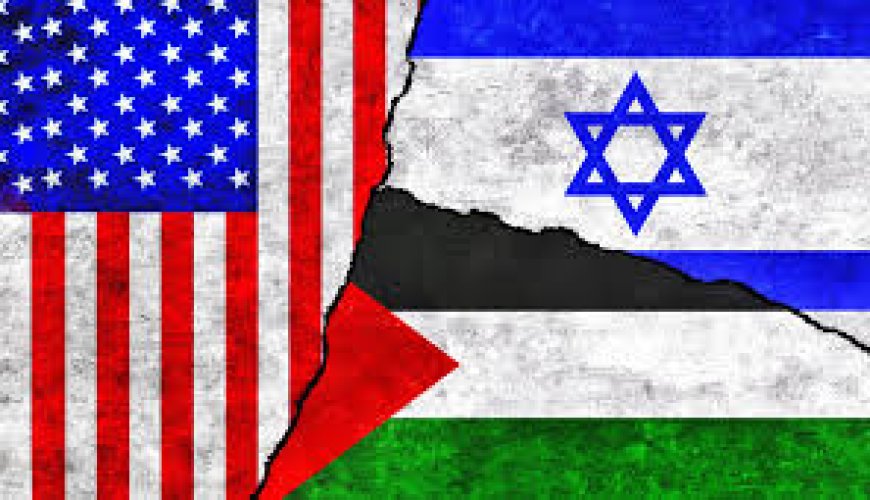US Steps In, Proposes Ceasefire Deal Between Israel and Iran
In a significant diplomatic development, the United States has officially proposed a ceasefire agreement between Israel and Iran, aiming to halt further escalation and pave the way for broader peace negotiations. This move comes after weeks of growing regional instability, retaliatory military strikes, and rising fears of a full-blown Middle Eastern conflict.

In a significant diplomatic development, the United States has officially proposed a ceasefire agreement between Israel and Iran, aiming to halt further escalation and pave the way for broader peace negotiations. This move comes after weeks of growing regional instability, retaliatory military strikes, and rising fears of a full-blown Middle Eastern conflict.
-
US proposes a ceasefire deal between Israel and Iran, confirmed by French President Macron.
-
G7 leaders divided: US blocks joint G7 ceasefire statement.
-
Iran welcomes regional mediation, signals flexibility in nuclear talks.
-
Israel has yet to respond formally, but continues air operations.
-
Trump denies ceasefire framing, says situation is “much bigger.”
Over the past several weeks, tensions between Israel and Iran have surged dramatically:
-
Israeli airstrikes have reportedly targeted Iranian nuclear and military facilities.
-
Iran has responded with retaliatory missile and drone attacks.
-
Several high-ranking Iranian military officials and scientists have been killed.
-
Regional allies and global powers have called for restraint.
This volatile situation has pushed the region closer to a wider conflict, threatening global oil supply chains, trade routes, and diplomatic alliances.
According to Macron’s statement to reporters:
“The United States has submitted a credible proposal for a ceasefire between Israel and Iran, followed by a diplomatic track to resolve deeper concerns.”
While the exact details remain undisclosed, diplomatic sources outline the following components:
-
Both nations would halt military operations.
-
No further cross-border strikes or drone activity.
-
Monitoring by neutral observers via the UN or the Red Crescent.
-
Mediated talks hosted by Gulf countries (possibly Oman or Qatar).
-
Focus on reducing nuclear tensions, military activity in Syria, and Lebanon.
-
Commitment to avoid civilian targets and proxy involvement.
-
Potential easing of selected economic sanctions.
-
Increased access to humanitarian aid.
-
A clear path for resuming nuclear negotiations with the West.
French President Emmanuel Macron confirmed the US’s diplomatic push and expressed optimism:
“This proposal, if accepted, could save thousands of lives and preserve regional stability.”
Iran
Iranian officials have welcomed Gulf mediation and expressed willingness to engage diplomatically, provided their sovereignty and right to defense are respected.
“We do not seek war, but we will respond to aggression,” said Iranian Foreign Minister Hossein Amir-Abdollahian.
Sources close to Tehran suggest Iran might be open to reentering nuclear talks if the US shows genuine intent to lift unjust sanctions.
Israel
As of now, no formal Israeli response has been issued regarding the ceasefire proposal. However, Israeli air force operations have continued, signaling a cautious or skeptical stance.
Israel’s Foreign Minister Gideon Saar recently emphasized:
“Israel’s security is non-negotiable. We will act wherever necessary to protect our people.”
Interestingly, US President Donald Trump downplayed the reports of a ceasefire proposal, stating:
“It’s much bigger than a ceasefire... We are working on a broader solution.”
White House insiders suggest the administration may be considering a comprehensive Middle East security pact that includes Saudi Arabia, Egypt, and Gulf states.
The Strait of Hormuz — a key chokepoint for global oil shipments — lies near Iranian territory. Escalation threatens oil prices, shipping insurance costs, and global inflation.
Iran’s enrichment of uranium, alleged weapons development, and Israeli counterstrikes could collapse the Non-Proliferation Treaty (NPT) regime.
Continued conflict risks displacing tens of thousands across Iran, Lebanon, and Syria, overwhelming UN relief agencies.
Saudi Arabia, the UAE, and Qatar are watching closely, as their diplomatic alignment and military posture could shift based on ceasefire outcomes.
“The US is using strategic ambiguity to manage expectations, while working through Gulf intermediaries,”
Dr. Narges Bajoghli, Middle East analyst, Johns Hopkins SAIS
“Even if this doesn't succeed, it sets a precedent for future conflict resolution in the region,”
Ambassador Dennis Ross, former US envoy to the Middle East
While tensions remain dangerously high, the US ceasefire proposal could mark a turning point. With global support, Gulf mediation, and measured responses, there remains a narrow but critical window for peace.
All eyes are now on Israel’s reaction and Iran’s willingness to negotiate beyond military retaliation. If diplomacy prevails, this moment could prevent a catastrophic war and reshape Middle Eastern diplomacy for the decade ahead.

 Ateeq Ur Rehman
Ateeq Ur Rehman